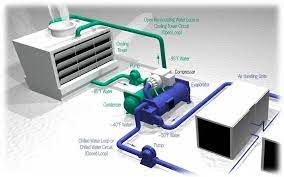An HVAC (Heating, Ventilation, and Air Conditioning) scope is a specialized camera that is used to inspect the interior of air ducts and other HVAC system components. It has a long, flexible cable with a high-resolution camera attached to the end, allowing HVAC technicians to see deep inside ductwork and identify any issues that may be present. Here are some of the benefits of using an HVAC scope.
Accurate Diagnostics
An HVAC scope allows technicians to see inside ductwork and other HVAC components that would otherwise be difficult or impossible to inspect. This means that they can identify problems that may not be visible from the outside, such as mold growth, blockages, or damage to the ductwork. By accurately diagnosing issues with the HVAC system, technicians can provide targeted solutions that address the root cause of the problem and ensure that the system is functioning properly.
Improved Efficiency
By identifying and addressing issues with the HVAC system, an HVAC scope can help improve the efficiency of the system. For example, if there is a blockage in the ductwork, air flow may be restricted, which can reduce the efficiency of the system and increase energy costs. By identifying and removing the blockage, an HVAC scope can restore proper air flow and improve the efficiency of the system, saving energy and reducing costs.
Enhanced Indoor Air Quality
An HVAC scope can also help improve indoor air quality by identifying and addressing issues that can lead to poor air quality. For example, if there is mold growth inside the ductwork, it can release spores into the air, which can cause respiratory problems and other health issues. By identifying and removing the mold, an HVAC scope can help improve the quality of the air inside the building and create a healthier environment for occupants.
Increased Safety
Using an HVAC scope can also help improve safety by identifying potential safety hazards in the HVAC system. For example, if there is damage to the ductwork, it can lead to leaks of harmful gases such as carbon monoxide. By identifying and repairing the damage, an HVAC scope can help prevent potential safety hazards and ensure that the system is functioning properly.
Cost-Effective
Using an HVAC scope is a cost-effective way to inspect and diagnose issues with the HVAC system. Without an HVAC scope, technicians may need to rely on guesswork or trial and error to identify and address issues with the system, which can be time-consuming and costly. By using an HVAC scope, technicians can accurately diagnose issues with the system and provide targeted solutions, which can save time and money in the long run.
Preventative Maintenance
Using an HVAC scope can also help with preventative maintenance of the HVAC system. By inspecting the interior of the ductwork and other components, technicians can identify potential issues before they become major problems. This can help prevent costly repairs and downtime, and ensure that the system is functioning properly.
Increased Customer Satisfaction
By using an HVAC scope to accurately diagnose issues with the HVAC system, technicians can provide targeted solutions that address the root cause of the problem. This can help improve customer satisfaction by resolving issues quickly and efficiently, and ensuring that the system is functioning properly.
In conclusion, an HVAC scope is a valuable tool for HVAC technicians that can provide accurate diagnostics, improve efficiency, enhance indoor air quality, increase safety, and be cost-effective. It can also help with preventative maintenance and increase customer satisfaction by providing targeted solutions that address the root cause of the problem. If you’re experiencing issues with your HVAC system, consider contacting an HVAC technician who uses an HVAC scope to accurately diagnose and resolve the problem.

